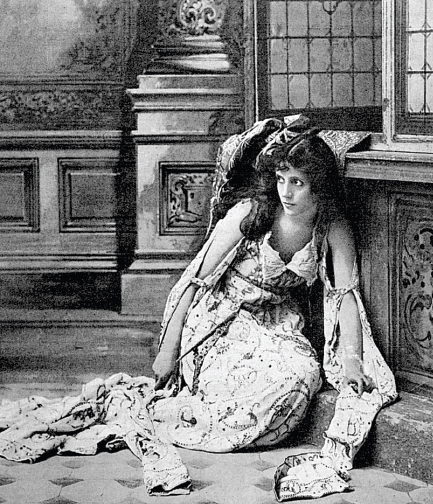Pyotr Ilyich Tchaikovsky, Overture-Fantasy, Romeo and Juliet (1869, revised 1880)
Tchaikovsky wrote several symphonic poems, including one on a subject already used by Liszt and Berlioz, Shakespeare’s Hamlet. Rather than symphonic poem, he preferred the descriptions symphonic fantasia or overture-
“The kernel of a new work usually appears suddenly, in the most unexpected fashion. . . .
Tchaikovsky letter to Madame von Meck about his composing, 1878
In his Romeo and Juliet, Tchaikovsky followed the outlines of the original play only in a very general way, but one can easily identify his main themes with elements in Shakespeare’s drama. The surging, romantic string melody clearly stands for the love of Romeo and Juliet. The angry, agitated theme suggests the vendetta between their families, the Capulets and the Montagues. More generally, it suggests the fate that dooms the two “star-
Slow Introduction The slow introduction of Romeo and Juliet is already heavy with drama. As low clarinets and bassoons play the sober Hymn theme, the strings answer with an anguished-
Allegro The tempo changes to allegro, and we hear the Vendetta or Fate theme. It is made up of a number of short, vigorous rhythmic motives, which Tchaikovsky at once begins to develop. Then the Vendetta theme returns in a climax punctuated by cymbal crashes.
The highly romantic Love theme (illustrated on page 226) is first played only in part, by the English horn and violas — a mellow sound. It is halted by a curious but affecting passage built out of a little sighing figure:


After the Love theme dies down at some length, a lively development section begins (a feature suggesting sonata form). Confronted by various motives from the Vendetta theme, the Hymn theme takes on a marchlike character. We may get the impression of a battle between the forces of good and evil.
The Vendetta theme returns in its original form (suggesting a sonata-
Coda (slow) A fragment of the Love theme appears in a broken version over funeral drum taps in the timpani. This must depict the pathos of Romeo’s final speeches, where he refers to his love before taking poison. A new, slow theme in the woodwinds is really a transformation of the sighing motive heard earlier.
But the mood is not entirely gloomy; as the harp strumming is resumed, the storyteller seems to derive solace and inspiration from his tale. Parts of the Love theme return in a beautiful new cadential version, surging enthusiastically upward in a way that is very typical of Tchaikovsky. Doesn’t this ecstatic surge suggest that even though Romeo and Juliet are dead, their love is timeless — that their love transcends death? The influence of Wagner’s Tristan and Isolde (see page 267) was felt here as everywhere in the later nineteenth century.